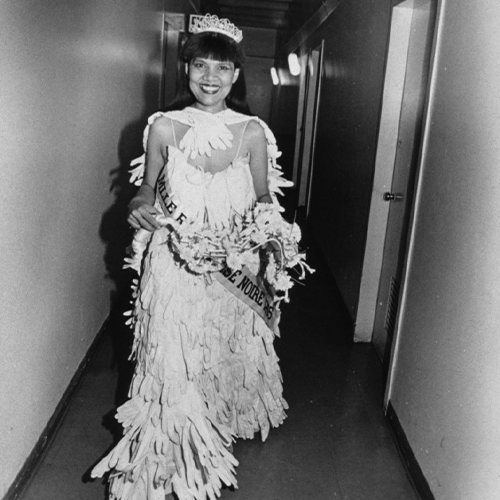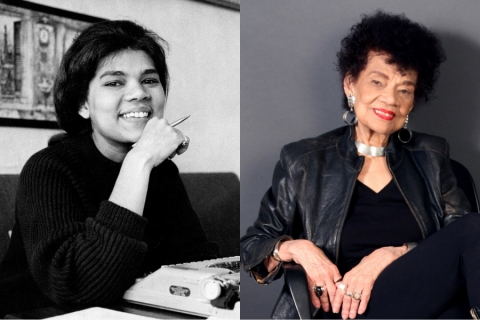In Memory of Lorraine O’Grady
Lorraine O’Grady (1934–2024)
Lorraine O’Grady, pioneering conceptual artist, writer, critic and former UC Irvine faculty member, passed away on December 13 at 90.
O’Grady’s transformative career spanned decades and mediums, exploring the intersections of race, gender and identity. Working across performance, collage, photography, video and text, O’Grady challenged societal conventions and the art world’s exclusionary practices, leaving a legacy that remains urgent and timeless. Her criticism extended into art history, particularly examining Edouard Manet’s representations of Black subjects. O’Grady offered a nuanced critique of Laure — the Black servant in Olympia — whose presence is often overlooked in traditional readings of the painting. In her reflections, O’Grady illuminated Laure’s significance, challenging the historical erasure of Black figures in canonical Western art. These insights illustrated how art history’s omissions reflect larger systemic biases and how art can serve as a tool for reclamation and critique.
In 1955, O’Grady graduated from Wellesley College, majoring in economics with a minor in Spanish literature. From there, she worked for a translation agency in Chicago and later moved to New York City in 1973 to become a music critic for Rolling Stone and the Village Voice. Following successful careers as a literary translator and rock critic, O’Grady first exhibited work at 45, foreshadowing the revolutionary spirit of her practice. Her celebrated persona Mlle Bourgeoise Noire (1980) remains one of her most iconic performances — a biting critique of the segregated art world, where she infiltrated gallery spaces dressed in a gown of white gloves, offering both flowers and poetry that demanded inclusion and change. Her participatory performance Art Is… (1983), staged during the Harlem African American Day Parade, framed onlookers as art itself, a declaration of the beauty and humanity often overlooked in Black communities.

Image: Lorraine O'Grady's 1981 New Museum performance of Mlle Bourgeoise Noire where she'd infiltrate art spaces, highlighting the segregated nature of the art world. Photo owned by Lorraine O’Grady.
In 2000, O’Grady joined UC Irvine as an Assistant Professor with a joint appointment in the Department of Art and the Program in African American Studies. Her years at UCI were marked by her critical spirit and commitment to mentoring students and artists. She retired in 2006, returning to New York City, where her career experienced a resounding resurgence including multiple profiles in The New York Times and The New Yorker.
Her artistic contributions have impacted broader cultural spaces, reflecting her dual presence in the avant-garde and popular culture. She was the central subject of acclaimed musician Anohni’s 2016 music video Marrow, a moving tribute to her artistry, and referenced in Le Tigre’s 1999 feminist anthem Hot Topic.
Among the many accolades O’Grady received were a Guggenheim Fellowship (2024), the Women’s Caucus for Art Lifetime Achievement Award (2022) and the CAA Distinguished Feminist Award (2014). In 2021, the Brooklyn Museum presented Lorraine O’Grady: Both/And, the first full retrospective of her work at 86, solidifying her legacy as one of the most significant contemporary figures in performance, feminist and conceptual art.
Lorraine O’Grady’s refusal to accept reductive ways of thinking and seeing remains a powerful call to artists, critics and observers alike. Her life and work are a testament to art’s ability to critique, transform and inspire.
To learn more about Lorraine O’Grady’s work, visit her website at lorraineogrady.com. For information about O’Grady’s legacy, visit The New York Times. For an in-depth conversation with Lorraine O’Grady, visit her interview with The New Yorker.

